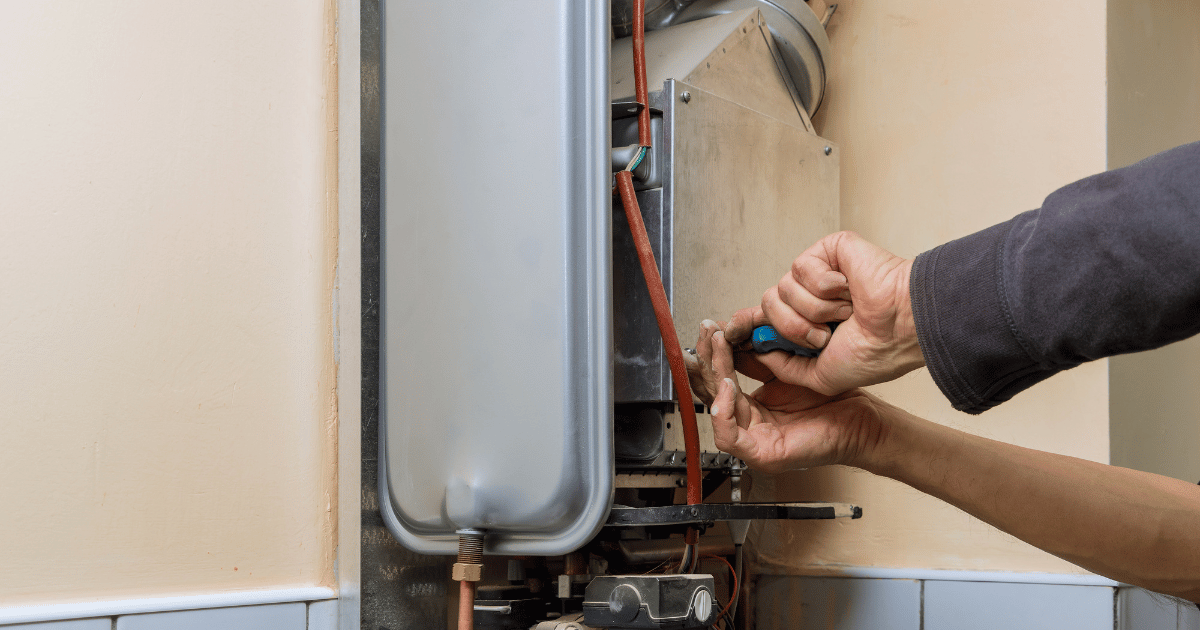How to Keep Your Home's Hot Water System in Good Condition
How to Keep Your Home's Hot Water System in Good Condition
Blog Article
The writer is making several great points on How to Maintain Your Water Heater & Prolong its Life in general in this content beneath.

Hot water is essential for day-to-day comfort, whether it's for a refreshing shower or washing meals. To guarantee your hot water system runs effectively and lasts much longer, regular upkeep is vital. This write-up offers functional tips and insights on how to preserve your home's warm water system to avoid interruptions and pricey fixings.
Introduction
Preserving your home's warm water system might seem overwhelming, but with a couple of easy actions, you can ensure it operates smoothly for several years to find. This guide covers whatever from comprehending your warm water system to DIY upkeep pointers and knowing when to hire specialist help.
Importance of Keeping Your Warm Water System
Regular maintenance not only expands the life-span of your hot water system but likewise ensures it runs successfully. Neglecting maintenance can bring about decreased performance, higher energy bills, and even premature failing of the system.
Signs Your Hot Water System Needs Maintenance
Understanding when your warm water system requires attention can avoid major issues. Keep an eye out for indications such as irregular water temperature, odd noises from the heating system, or corroded water.
Flushing the Water Heater
Flushing your water heater gets rid of sediment buildup, improving efficiency and extending its life.
Monitoring and Replacing Anode Rods
Anode poles stop deterioration inside the storage tank. Examining and replacing them when worn is crucial.
Complicated Issues Calling For Professional Assistance
Instances consist of significant leaks, electrical issues, or if your hot water heater is constantly underperforming.
Regular Professional Upkeep Advantages
Specialist maintenance can include thorough inspections, tune-ups, and ensuring conformity with security requirements.
Examining and Adjusting Temperature Level Setups
Readjusting the temperature level settings guarantees optimal efficiency and security.
DIY Tips for Upkeep
You can carry out several maintenance jobs yourself to maintain your warm water system in leading condition.
Looking for Leakages
Consistently inspect pipes and connections for leakages, as these can cause water damage and higher expenses.
Understanding Your Warm Water System
Before diving right into upkeep tasks, it's helpful to understand the fundamental components of your warm water system. Usually, this consists of the water heater itself, pipelines, anode rods, and temperature controls.
Month-to-month Maintenance Tasks
Normal monthly checks can aid catch small concerns prior to they intensify.
Testing Stress Relief Valves
Examining the pressure safety valve ensures it operates properly and prevents extreme stress buildup.
Shielding Pipes
Shielding warm water pipelines reduces warm loss and can conserve energy.
When to Call an Expert
While DIY maintenance is valuable, some concerns require expert expertise.
Final thought
Routine upkeep of your home's hot water system is vital for performance, durability, and price financial savings. By following these ideas and recognizing when to look for professional aid, you can guarantee a reputable supply of hot water without unexpected interruptions.
How to Maintain an Instant Hot Water Heater
Before tinkering with your hot water heater, make sure that it’s not powered on. You also have to turn off the main circuit breaker and shut off the main gas line to prevent accidents. Also turn off the water valves connected to your unit to prevent water from flowing into and out of the appliance. 2. When you’re done, you have to detach the purge valves’ caps. These look like the letter “T†and are situated on either side of the water valves. Doing so will release any pressure that has accumulated inside the valves while at the same time avoid hot water from shooting out and burning your skin. 3. When the purge valves’ caps are removed, you have to connect your hosing lines to the valves. Your unit should have come with three hoses but if it didn’t, you can purchase these things from any hardware or home repair shops. You can also get them from retail stores that sell water heating systems. Read the user’s manual and follow it to complete this task properly. When the hosing lines are connected, open the purge port’s valves. 4. You should never use harsh chemical cleaners or solutions when cleaning your unit. Make use of white vinegar instead. It should be undiluted and you’ll probably use about 2 gallons. 5. Now flush your water heater. This task should probably take about 40 minutes. We can’t give you specific directions for this because the procedure is carried out depending on the type, model and brand of your heater. With that being said, refer to the user’s manual. 6. When you’re done draining the unit, you have to turn off the purge port valves again. Remove the hosing lines that you earlier installed on each of the water valves. Put the valve caps (purge port) back in their respective places and be very careful so as not to damage the rubber discs that are found inside these caps. 7. Now that everything’s back in place, check your user’s manual again to find out how to reactivate your water heating system. 8. Once it is working, turn one of your hot water faucets on just to let air pass through the heater’s water supply pipes. Leave the tap on until water flows smoothly out of it. https://www.orrplumbing.com/blog/2014/september/how-to-maintain-an-instant-hot-water-heater/

Hopefully you enjoyed our excerpt on How to Maintain a Hot Water Heater in a Few Simple Steps. Thank you so much for taking the time to read our short article. Loved our entry? Please share it. Let other people discover it. We love your readership.
Click Here Report this page